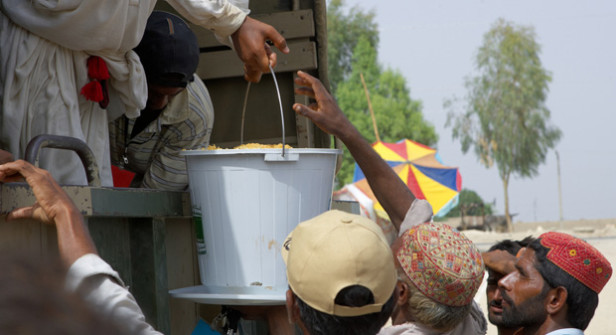A call to rethink the aid effectiveness debate
A call to rethink the aid effectiveness debate

The debate surrounding foreign aid effectiveness is often framed around whether or not aid works, but that, according to a new working paper on the issue released this week, may just be the tip of the iceberg.
Nancy Qian, associate professor of economics at Yale University and author of the paper, which will be published in
the Annual Review of Economics next year, suggests that the often
polarizing discussion on aid effectiveness could very well benefit from
asking slightly different questions.
Qian starts out by laying out some figures on foreign aid. Donors from the Organization for Economic Cooperation and Development’s
Development Assistance Committee have spent up to $3.5 trillion on
development assistance from 1960 — the first year that data was reported
annually — to 2013.
Aid flows have also
remained relatively constant over this period. But while the countries
comprising the top donors have remained largely the same, the top
recipient governments have varied significantly over time — a reflection
of how strategic concerns, instead of the extent of poverty in these
recipient countries, often guide donors’ aid policies and decisions.
Qian’s analysis of total ODA by recipient income confirms this: only
1.69 percent to 5.25 percent of total global aid flows go to the poorest
20 percent of countries every year.
While
the availability of data on ODA has enabled researchers to conduct their
own studies on the impact of aid — and contributed to both the growing
body of literature on aid and the divisive debate on its merits —
challenges in measuring aid effectiveness remain.
For
one, Qian notes that several studies on the subject use aggregate ODA.
But aggregate ODA — which could be comprised of cash transfers, debt
relief and food aid, among other types of assistance — can be difficult
to evaluate because its components have different measurement issues,
which consequently influence different outcomes. Trying to determine a
link between aggregate ODA and growth in a recipient country can thus be
a daunting task.
That a significant amount
of aid is spent in donor countries themselves also complicates how to
measure the amount of ODA that truly goes to a certain country. For
instance, higher volume of ODA in terms of administrative expenses does
not necessarily mean that more ODA went to that particular recipient,
Qian emphasized.
Appraising the value of
aid that is channeled to a country also poses a problem. One example is
food aid, which Qian points out is valued at the price of the donor
country — and can therefore be significantly higher than food prices in
the recipient country.
These issues point
to a need for future studies to assess “the effect of a narrowed
definition of aid on a narrowed set of outcomes,” according to Qian.
They also suggest that there is more to the conundrum that is the “Does
aid work?” question.
“The polarized
arguments of the necessity of aid versus the detrimental effects of aid
are premature, and the discussion of total foreign aid and the lack of
economic improvement for the poorest countries in the world is somewhat
misleading,” Qian writes.
Still, she offers
no easy answers, and suggests thinking about aid in terms of a) whether
it has been effective; and b) whether and how it can ever be effective.
On
the surface, the second question may seem to dismiss the discussion
that arises from the first. It may even sound cynical. But there seems
to be an underlying optimism beneath the point that Qian wants to make:
While asking whether foreign aid has been effective involves delving
into how aid policy could be improved, analyzing whether aid can ever be
effective entails deciding whether researchers and policymakers should
spend time and resources trying to understand — and, more importantly,
improve — aid. The answer to the first question then determines whether
the second one is even worth asking.
Qian
concludes: “For policymakers, it is critical to avoid using negative
answers to the first question to answer questions regarding the
potential value of foreign aid.”
Read more development aid news online, and subscribe to The Development Newswire to
receive top international development headlines from the world’s
leading donors, news sources and opinion leaders — emailed to you FREE
every business day.
About the author


Comments